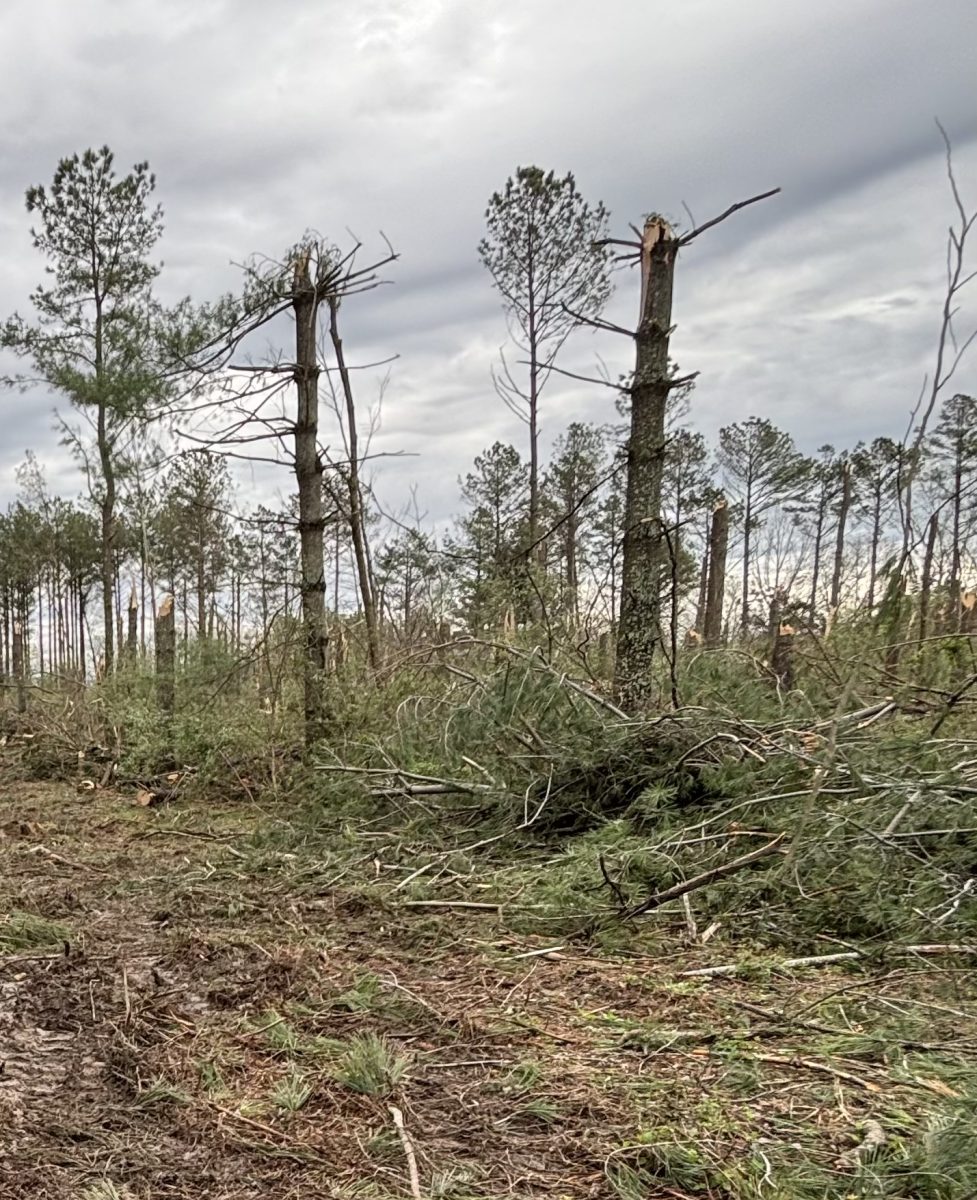SIU research students are looking into ways to deactivate or stop virus-spreading germs with chemical technology in hopes it can help mitigate future virus outbreaks.
Chemical and Biomolecular Sciences professor Punit Kohli gathered a team of local high school students, SIU students and assistance from researchers like Dr. Jose Vargas-Muniz formerly from the College of Agriculture and Scott Hamilton-Brehm from the Department of Microbiology to develop this research.
Advertisement
He also had help from Dr. Boyd Goodson from the school of Chemical and Biomolecular Sciences and Drs. Phil Jensik and Amber Pond from the School of Medicine for research development.
The research group also collaborated with molecular microbiologist Micheal Olson from the SIU Springfield location who supplies them with other deadly bacteria to test.
According to the published research paper, the device uses electrically polarized nanoscale metallic (ENM) coating to deactivate a diverse scale of microorganisms in less than 10 minutes of usage.
Advertisement*
The research microorganism being used is gram-negative and gram-positive bacteria that could be harmful to humans and have seen positive outcomes.
Kohli said his initial idea was to make a device that could go in masks to self-sanitize with hope it will protect people from COVID-19 more than they already do. He involved PhD chemistry students Aswad Ali and Annie Vargas-Lizarazo, Nehal Mazumder and highschool student Gitanjali Kohli and began research.
“So, we needed copper in a form of plus one and then we needed to make the surface conductive, so we also have that kind of resources here,” Ali said. “We started doing one step at a time, and then those experiments, we ultimately made some devices, and we tested those devices for the microbe deactivation. We started with two different bacteria, gram-positive and gram-negative bacteria from Dr. Hamilton-Brehm’s lab, and then it showed us promising results.”
The device itself consists of a surgical mask containing copper and silver . It requires four batteries with opposite wires on both sides that will react to make the voltage current that powers it.
Ali said when potential is applied to the microbes in a medium like water, it will produce a reactive oxygenated and chlorinated species.
“Through the chemical reaction between the material (copper I and water) we have here, our active material here is copper II and for the conduction,” Ali said. “To make it conductive, we add a thin silver coating. So combining all of these, it has [the appropriate] chemistry to make it work.”
The use of gram-negative and positive bacteria is the resource they have at the school, and both have differences in resistance towards infections.
“That is the main reason we started with both of these, because we do not know which particular gram-positive or particular gram-negative bacteria can cause more of the damage to human health,” Ali said. “Later, we moved to fungi and viruses as well, because at that time, the main focus was to deactivate viruses like COVID-19.”
Vargas-Lizarazo said it was a challenging process at the start to find someone to test the microbes since their work focuses more on chemistry. With the help of other researchers like Hamilton-Brehm, Vargas-Lizarazo was able to be lab trained in order to properly test the microbes.
“During all (of) this process, we have struggled to find the chemistry, but we have many meetings, many discussions, and we found that our specific reactive oxygen and chlorinated species, they’re responsible to deactivated microbes,” Vargas-Lizarazo said.
One of the main reasons for pursuing this research is the number of outbreaks that happen every year such as the flu, Vargas-Lizarazo said.
According to the Centers for Disease Control and Prevention (CDC), there was a measles outbreak infecting over 10 million people globally in 2023. In the U.S., flu season continues throughout the years with around 34 million symptomatic illnesses, 15 million medical visits and 380,000 people in the hospital for it.
According to an NPR article made in October of this year, the CDC has seen an increase of mycoplasma pneumonia in children in the U.S.
When it comes to the amount of people sick from viruses globally, Vargas-Lizarazo said we see the numbers but not the full impact, so opening their studies up to more dangerous diseases will hopefully mitigate these yearly outbreaks in the future.
Kohli said the device should act as an extra push for cleansing when talking about things like antibiotics which are still always needed, but sometimes don’t fully die out.
“If the mechanism is really through reactive, oxygenated and chlorine species, we should be able to kill, if under the right condition, almost all the bacteria and viruses they can see,” Kohli said. “Because they don’t care, they discriminately go and contact a cell or a particle and they deactivate it through different mechanisms.”
When looking into previous research on ENM, Kohli said he didn’t find much on it, possibly being the first to do it, which makes him more excited to develop and share this knowledge.
“If we can actually create new knowledge and understand the basic fundamental processes involved, that is very rewarding,” Kohli said. “I think with the help of students we think that ENM probably has (a) lot more potential.”
If developed further, Kohli said it can be implemented in face masks, on flat surfaces, handles, in hospitals and many other places.
“The other motivation was all the funding that at least I get, and both Annie and Muhammad Ali are supported through public money,” Kohli said. “I think that it’s our responsibility to contribute, if we can, through our knowledge through and through the making of these devices that we can actually contribute to, like a more broader society and humanity.”
Editors Note: This story has been updated from the original version to add additional information and correct errors
To stay up to date on all your southern Illinois news, be sure to follow The Daily Egyptian on Facebook and @dailyegyptian on X [formerly known as Twitter].
Jamilah Lewis can be reached at jlewis@dailyegyptian.com. To stay up to date with all your southern Illinois news, follow the Daily Egyptian on Facebook and Twitter.
Advertisement



















